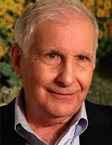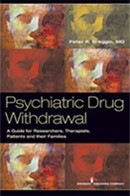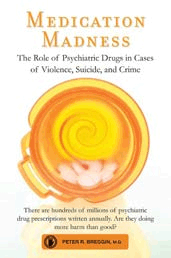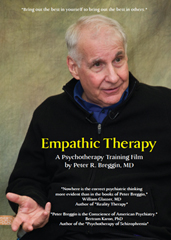The Landmark Kaimowitz Trial Against Psychosurgery
THREE-JUDGE OPINION ULTIMATELY ENDS PSYCHOSURGERY IN STATE HOSPITALS, VA AND NIH
DR. BREGGIN’S TESTIMONY SETS STAGE TO INVOKE NUREMBERG CODE
The following is excerpted and slightly revised from a longer article by Dr. Breggin on the history of his reform work in stopping the return of lobotomy and psychosurgery in the 1970s and then in stopping the racist federal violence initiative in the 1980s. These events are described in greater detail in Peter and Ginger Breggin, The War Against Children of Color (1998. Legal and political aspects of the antipsychosurgery campaign are also described in a law review article by Peter Breggin, “Psychosurgery for Political Purposes”(1975). Also see the sections on Racism and on Psychosurgery.
Originally published in Journal of African American Men 1:No. 3, 3-22. Winter 1995/96 under the title, “Campaigns Against Racist Federal Programs by the Center for the Study of Psychiatry and Psychology” by Peter R. Breggin, M.D.
In 1972 the State of Michigan and the Lafayette Clinic of Wayne State University began planning an experimental psychosurgery program for the control of violence, using “voluntary” inmates of the state hospital system. Gabe Kaimowitz, at the time a Michigan Legal Services lawyer, heard about the upcoming medical event, and intervened in the court on behalf of “John Doe” and two-dozen other state psychiatric inmates scheduled for eventual enrollment in the experimental program.
Comparing Blacks to Bulls
Ernst Rodin was the chief neurologist and the moving force behind the Lafayette Clinic’s psychosurgery project. In 1972, Rodin wrote a lengthy speech describing psychosurgery and castration as fitting treatment for some of the violent behavior displayed in the riots that had raged in his city of Detroit. Rodin voiced doubts about doing psychosurgery without sterilization, because with psychosurgery alone “the now hopefully more placid dullard can inseminate other equally dull young females to produce further dull and aggressive offspring.”
Rodin argued that children of limited intelligence tend to become violent when they are treated as equals. He wanted them brought up in an “authoritarian life style,” and declared that many of them, like aggressive bulls, should be turned into docile oxen by means of castration. In the neurologist’s own words, it was time to “get down to cold-blooded medical research dealing with individuals rather than masses.”
The Verdict
Kaimowitz invited me to testify as his medical expert and during two days on the stand, I gave a history of state mental hospitals and psychosurgery. I wanted the three judges to understand that state mental hospitals are similar to Nazi concentration camps in how they suppress and humiliate their involuntary inmates; and I wanted to suggest the applicability of the Nuremberg Code.
The Nuremberg Code was originally written into the final opinion of the judges at the first War Crimes Tribunals in postwar Germany. It consists of ten principles for “permissible medical experiments.” The first principle states in part that the human subject “should be so situated as to be able to exercise free power of choice, without the intervention of any element of force, fraud, deceit, duress, over-reaching, or other ulterior form of constraint or coercion” (Trials of War Criminals, 1946-1949, pp. 181-182).
The Nuremberg Code meant that Jewish inmates of concentration camps were not actually volunteers when they seemingly agreed to participate in medical experiments, such as being frozen in ice water. If they did acquiesce to these experiments, their consent was coerced by fear of other worse alternatives, such as torture or death in the gas chambers.
After hearing a spectrum of witnesses, the three judges agreed with the substance of my testimony, including the devastating effects of the most modern psychosurgery. Their official opinion cited the Nuremberg Code and used it as one reason for prohibiting consent to psychosurgery in the state mental hospitals of Michigan. The judges found that “involuntarily confined patients cannot reason as equals with doctors and administrators over whether they should undergo psychosurgery.” They declared that under First Amendment freedoms the “government has no power or right to control men’s minds, thoughts, and expressions. If the First Amendment protects the freedom to express ideas, it necessarily follows that it must protect the freedom to generate ideas.” The judges followed my testimony closely in describing how psychosurgery impairs mental and emotional functioning.
The opinion was never appealed and stands to this day. It continues to inhibit the performance of psychosurgery throughout the country, especially in state mental hospitals, the VA and prisons. Some psychosurgery continues in medical centers such as Harvard and Brown.
As described in The War Against Children of Color, there are contemporary attempts to revive lobotomy and other forms of psychosurgery, although none of the advocates now dare tie their work to political aims. What keeps advocates of psychosurgery from proceeding ahead full-throttle? Is it their own scientific caution or ethical concerns? In Psychosurgery (1992), Rodgers quotes Donlin Long, the Johns Hopkins director of neurosurgery:
“You’d also need an institutional commitment to absolutely pristine science and the guts to tell the Peter Breggins of the world to stuff it,” he [Long] added, referring to psychiatrist Peter Breggin’s lifelong battle to ban psychiatric surgery.
- Judges’ Opinion Applying Nuremberg Code in Kaimowitz psychosurgery case
- Dr. Breggin discusses Kaimowitz in his article, Psychosurgery for Political Purposes





